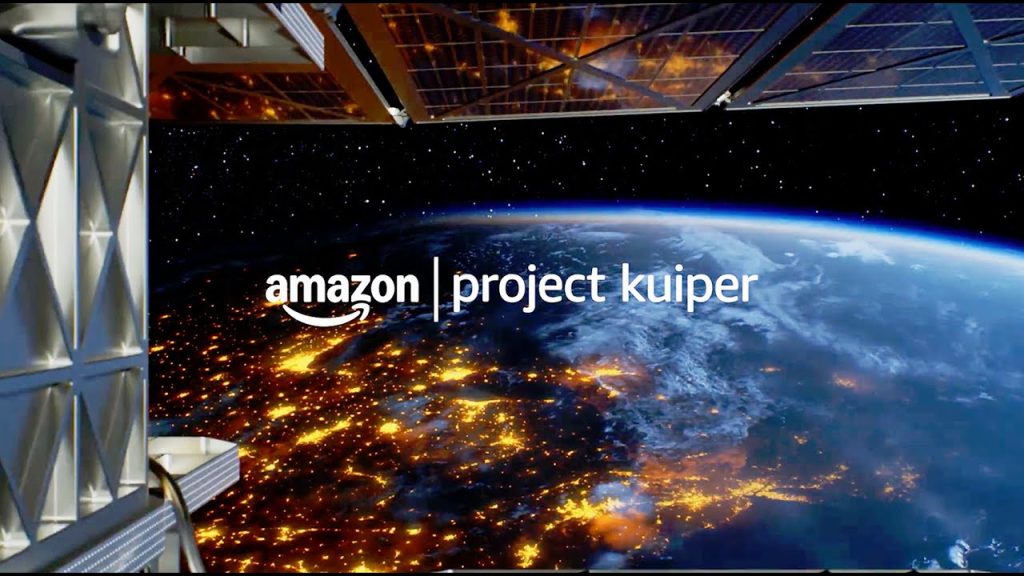Project Kuiper is one of the most ambitious satellite internet projects in the world today. Backed by Amazon,It aims to connect billions of people with fast, affordable broadband through thousands of satellites in low Earth orbit (LEO). With global internet demand rising, It has become a hot topic and a true competitor to SpaceX’s Starlink.
In this article, we will explore Project Kuiper in detail, answer key questions like who leads it, what speeds it offers, its launch date, price, and when it will be available worldwide.
Who is the CEO of Project Kuiper?
When discussing Project Kuiper, many people ask: Who is the CEO of Project Kuiper? The answer is slightly unique. Project Kuiper is not a separate company; it is a subsidiary under Amazon.com, Inc. Therefore, the CEO of Amazon, Andy Jassy, is ultimately responsible for It.
However, It is technically led by Rajeev Badyal, who serves as the Vice President overseeing the operations and engineering of the project. Rajeev previously worked at SpaceX’s Starlink, making him an experienced leader for It.
So while Andy Jassy is the overall Amazon CEO, Rajeev Badyal is the direct executive in charge of Project Kuiper.
Starlink Package Price in the USA: Complete Guide to Costs, Plans, and Value.
Is Project Kuiper Like Starlink?
Yes, Project Kuiper is very similar to Starlink in its mission and design. Both it and Starlink use low Earth orbit satellites to provide satellite internet with low latency and high speeds.
However, there are key differences. It relies on Amazon’s supply chain and global reach, whereas Starlink is powered by SpaceX’s own rockets. Project Kuiper also focuses heavily on affordability, planning to keep user terminals under $400, making it more attractive for developing countries.
In short, it is like Starlink in technology but different in business strategy and pricing goals.

What is the Meaning of Kuiper?
The name Project Kuiper has an astronomical meaning. The term “Kuiper” refers to the Kuiper Belt, a region of our solar system beyond Neptune that contains icy objects and dwarf planets. The Kuiper Belt was named after astronomer Gerard Kuiper, who studied this region.
By naming it Project Kuiper, Amazon emphasizes the space connection and the ambitious nature of reaching the farthest corners of the world with internet connectivity. The meaning shows that it is about exploration, expansion, and pushing the boundaries of technology.
Is Project Kuiper a Competitor to Starlink?
Without a doubt, Project Kuiper is a direct competitor to Starlink. Both aim to dominate the satellite broadband industry by providing fast and reliable internet to underserved regions.
Starlink has the advantage of being first to market, but It benefits from Amazon’s massive resources, logistics, and cloud services like AWS. Analysts predict that It will push competition further, leading to better prices and faster speeds for customers.
So yes, It is one of the strongest competitors to Starlink, and the rivalry could shape the future of global internet.
What is the Speed of Kuiper?
Amazon has revealed impressive performance expectations for Project Kuiper. The internet speed of Project Kuiper will vary depending on the terminal model:
- Standard Project Kuiper terminal: up to 400 Mbps
- High-performance enterprise terminal: up to 1 Gbps
- Compact consumer model: around 100 Mbps
In internal tests, Project Kuiper has already achieved 1 Gbps throughput, proving its capability. This means Project Kuiper will easily compete with Starlink and traditional broadband in many markets.
What is Project Kuiper’s Goal?
The main goal of Project Kuiper is to bridge the digital divide. Today, millions of people around the world lack access to reliable internet. By launching over 3,200 satellites, It will cover rural, remote, and underserved areas with affordable connectivity.
Beyond just internet, Project Kuiper’s goal is to integrate with Amazon Web Services (AWS), support businesses, governments, and educational institutions, and even enhance Amazon’s logistics network.
In short, the goal of It is to deliver fast, affordable, and global internet that empowers individuals and communities worldwide.
Project Kuiper Launch Date
The official Project Kuiper launch date is already underway. Two prototype satellites were launched in October 2023, proving the concept.
The first full-scale Project Kuiper satellite launch took place on April 28, 2025, using a United Launch Alliance (ULA) Atlas V rocket.
Amazon is required by the FCC to launch half of its Project Kuiper constellation (about 1,600 satellites) by July 2026, and the rest by 2029. This aggressive timeline ensures that It will expand rapidly in the coming years.

Project Kuiper Price
Amazon has not officially announced the exact Project Kuiper price, but here’s what we know so far:
- The Project Kuiper terminal (antenna) will cost under $400.
- Monthly service fees for Project Kuiper are expected to be competitive with Starlink, estimated between $100–$120 per month.
- Amazon emphasizes affordability, so Project Kuiper price may vary by region to support developing countries.
This strategy means Project Kuiper could attract millions of users who find Starlink too expensive.
When Will Project Kuiper Come All Over the World?
Many people want to know: when will it be available worldwide?
According to Amazon,It will start offering service in late 2025, beginning with selected regions. The rollout will expand in 2026 as more satellites are launched.
By 2029, with the full constellation in orbit, Project Kuiper is expected to be available all over the world. However, availability will also depend on each country’s regulatory approvals.
So, while some countries may get Project Kuiper internet by 2025–2026, true global coverage will arrive closer to the end of the decade.
Conclusion
Project Kuiper is Amazon’s ambitious plan to create a global satellite internet network. With Andy Jassy as Amazon CEO and Rajeev Badyal leading the project, Project Kuiper is well-positioned to compete with Starlink.
The meaning of Kuiper highlights exploration and far reach, which matches the project’s goal of connecting underserved regions. With expected speeds up to 400 Mbps (and even 1 Gbps for enterprises), an affordable price model, and a launch timeline already in progress, Project Kuiper has the potential to revolutionize internet access.

